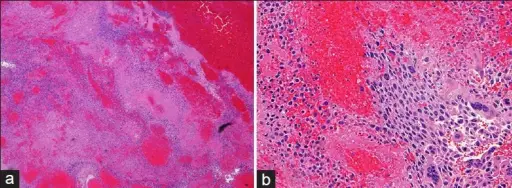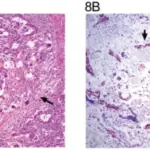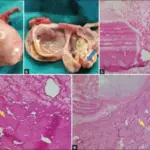Choriocarcinoma is a histologic category of non-seminomatous germ cell lesions, together with testicular seminoma establishes deuce major histologic clusters of testicular tumors.
What is the Pathology of Choriocarcinoma?
The pathology of choriocarcinoma is:
-Etiology: The cause of choriocarcinoma is genetic changes, exposure to maternal estrogen, testicular trauma, and mumps.
-Genes involved: Unknown.
-Pathogenesis: The sequence of events that lead to choriocarcinoma include a history of cryptorchidism. Genetic disparities in form of amplification and deletions are allied to the invasive advance of seminomas and nonseminomas.
-Morphology: The morphology associated with choriocarcinoma shows a small soft hemorrhagic necrotic mass.
-Histology: The histology associated with choriocarcinoma shows tumors containing two cell types, the syncytiotrophoblastic cell, and cytotrophoblastic cells.
How does Choriocarcinoma Present?
Patients with choriocarcinoma typically affect males and present at the age range of 15-35 years. The symptoms, features, and clinical findings associated with choriocarcinoma include testicular pain, scrotal swelling, and a palpable testicular lump.
How is Choriocarcinoma Diagnosed?
Choriocarcinoma is diagnosed through laboratory studies alpha-fetoprotein test, beta-hCG test. Biopsy is confirmatory.
How is Choriocarcinoma Treated?
Choriocarcinoma is treated through chemotherapy, orchidectomy, and retroperitoneal lymph node dissection.
What is the Prognosis of Choriocarcinoma?
The prognosis of choriocarcinoma is poor due to it’s tendency to spread throught the blood stream.



